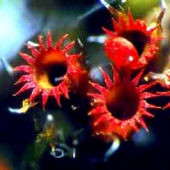Please select root levels for the menu
NZ Plants
The Capsule covering: the calyptra
After fertilisation of the egg cell within the archegonium, the following changes take place:
- the embryo forms a stalk (seta) which elongates to split the archegonium covering at its base
- this covering is known as the calyptra
- a capsule is formed at the tip of the seta and is exposed when the calypta is shed
- the capsule has a lid (operculum) that opens to release spores
The calyptra during embryo elongation
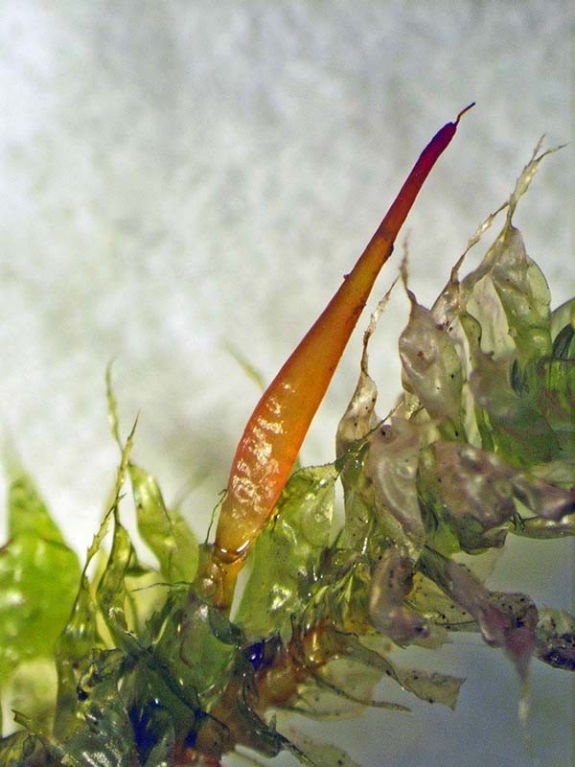
Ptychomnion aciculare - The developing embryo has here split the archegonium at its base where a short stalk (seta) can be seen. The fine thread-like structure at the tip is the archegonium is archegonium neck.
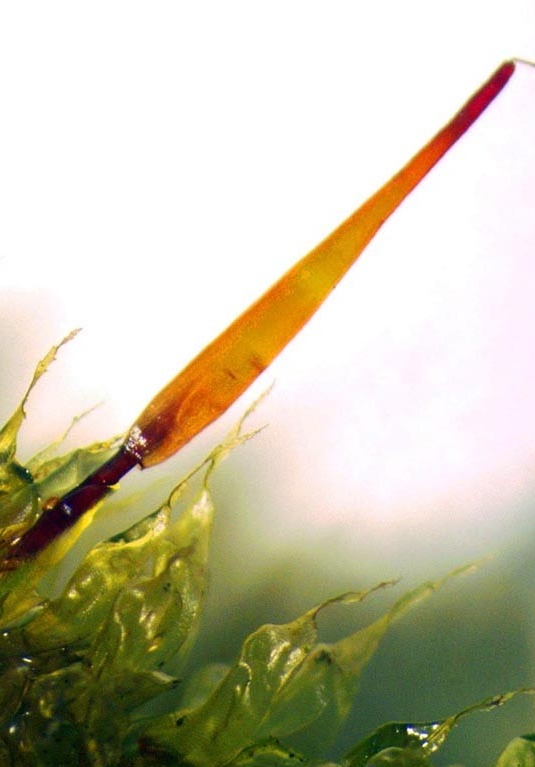
Ptychomnion aciculare - The steta elongates carring the top half of the archegonium, now called the calyptra, upward. A capsule with spores develops at the tip of the seta.
The calyptra during capsule maturation
The calyptera and operculum vary in size, longevity and shape, providing a useful characteristic in distinguishing different mosses from one another.
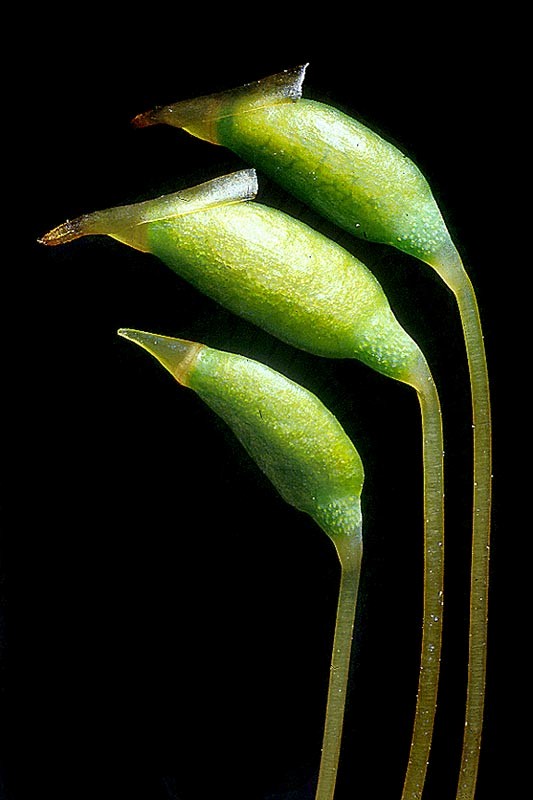
Psilopilum crispulum - In this moss the calyptera covering is smooth and splits open along one side, exposing a conical operculum at the top of the capsule.
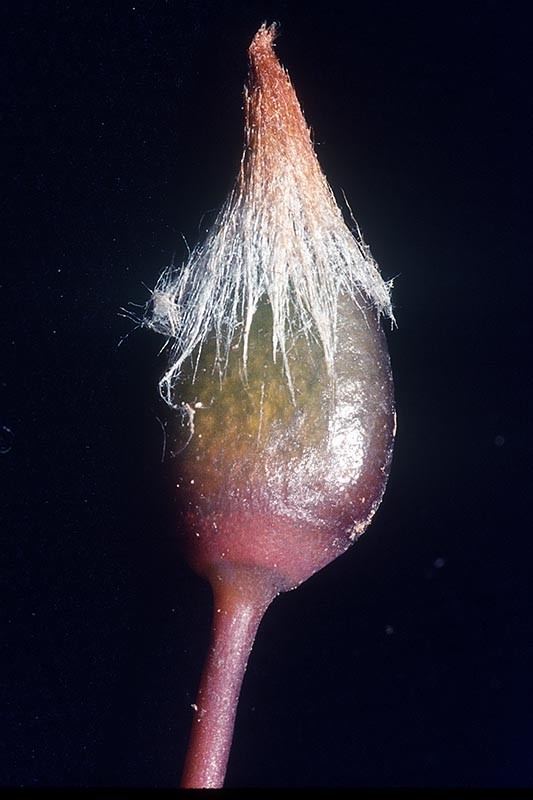
Dawsonia superba - The calyptra of this moss is covered with hairs.
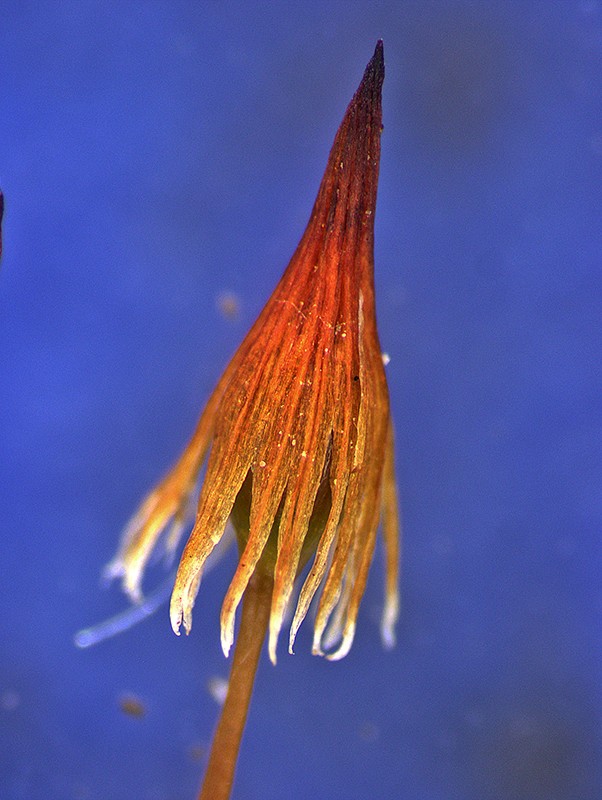
Macromitrium longipes - In this genus the calyptra splits open around all sides forming a pleated or fringed hood over the capsule underneath.
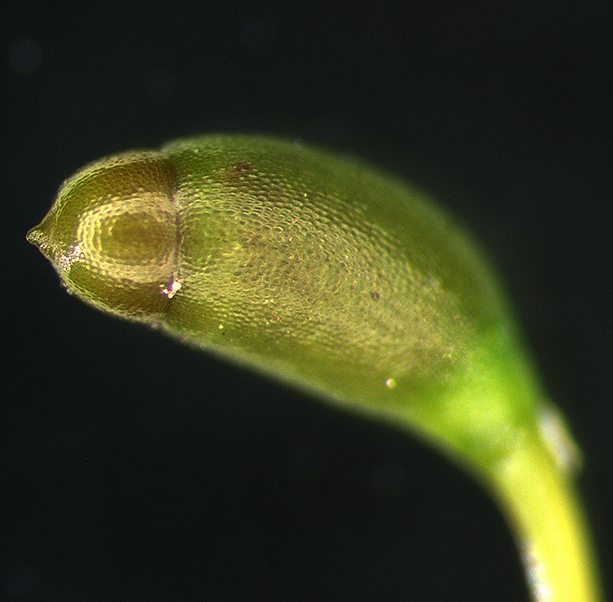
Camptochaete pulvinata - In this genus, the capsule lid is short and rounded, abruptly terminating in a sharp projection (apiculus).
See Find by Genus page for more on this group of mosses.
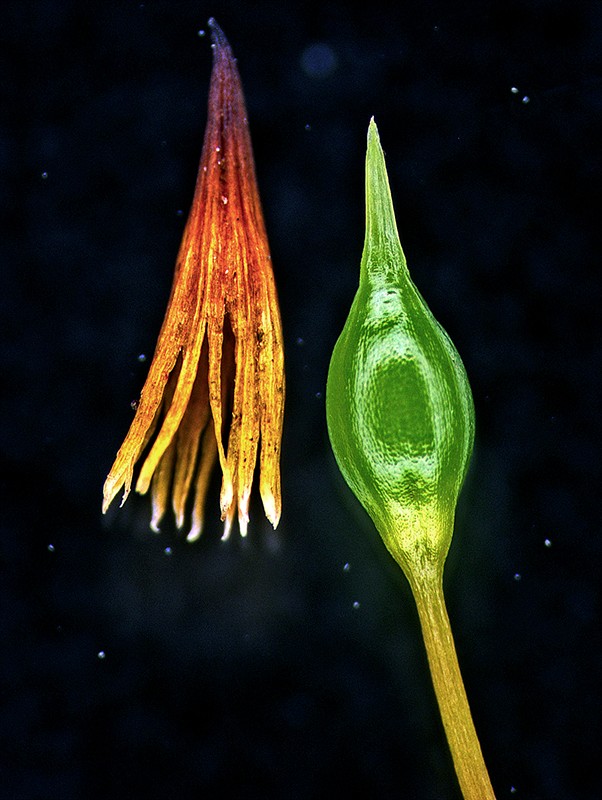
Macromitrium longipes - If the calyptra is removed, the capsule lid (operculum) can be seen. In this genus, the operculum is long and tapering.
See Find by Genus page for more on this group of mosses.

